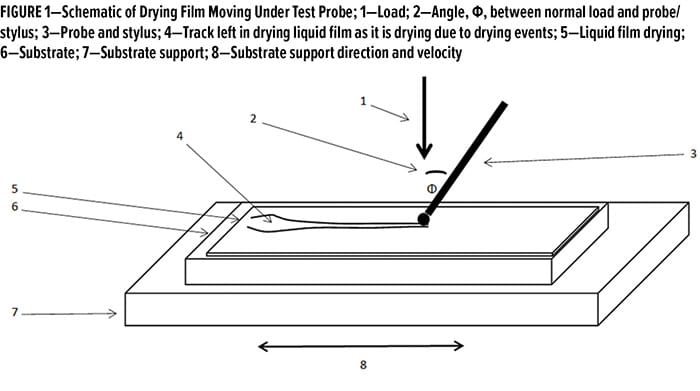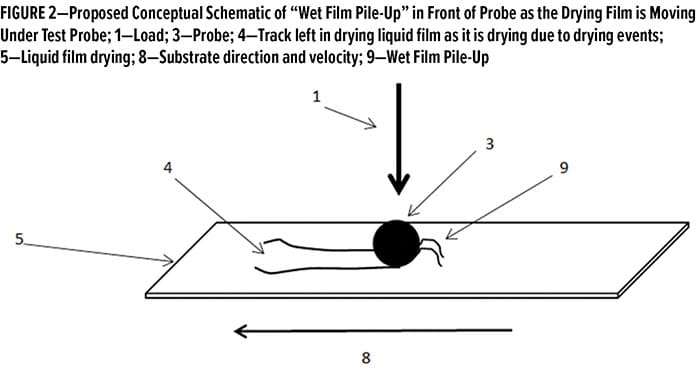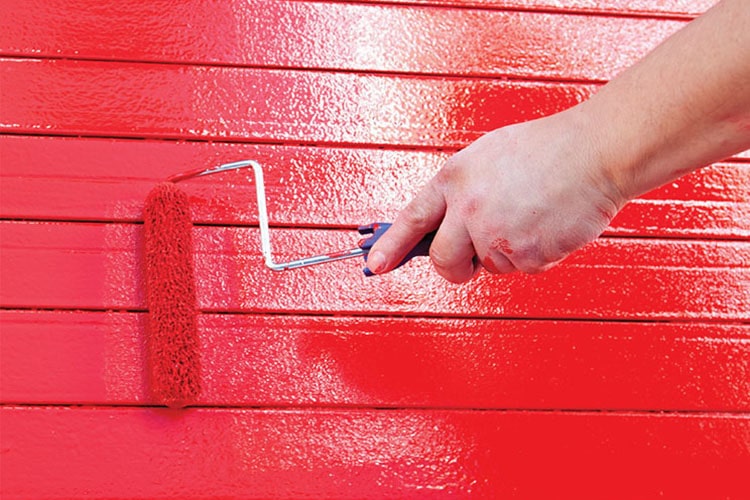By Ronald T. Obie and Cameron R. Anderson, ADEPT Materials Science and Engineering
Characterization of dry and cure is very important in the development of paints, coatings, and adhesives. It can be challenging to assess dry and cure of these products on a quantitative, non-biased basis.
Although there are many different techniques utilized to assess drying, curing, and performance, some are often qualitative at best. It would be useful to have quantitative techniques available to access these properties. In this paper, we introduce a novel automated dynamic dry time recorder (ADDTR) device that measures dry and cure of coatings similar to mechanical dry time recorders that meet ASTM Method D 5895.
The novel device is capable of recording and graphically displaying the coating drying profile as it dries so that drying time events may be easily identified, archived, and analyzed, even for clear coatings. Such analysis allows easy and quantitative comparison between different coating systems, chemistries, driers, etc. In certain configurations, the tester may also be utilized as a hardness, toughness, and adhesion tester.
Introduction
The evaporation of solvent/water and subsequent dry of a finish impacts such properties as coating application (e.g., atomization in spray processes), air entrapment, solvent popping, flow and leveling, gloss and gloss uniformity, and dust-free, tack-free, and dry-hard times, print and block resistance, and hardness development, to name a few.
Further, reactive water-based and solvent-based adhesive processing and performance is impacted by its film building and drying time as it cures. A variety of methodologies are used to access drying and film formation of paints, coatings, and adhesives, of which some include visual assessment of flash-off, physical assessment of drying by touching with the finger, or scratching with the fingernail.
Other physical methods include measuring hardness by pencil hardness testing1 or by using the König, persoz, or sward rocker2. Still other physical methods include measuring print or block resistance as a function of time3. Chemical methods for assessing state of curing include measuring MEK double rubs as a function of time, while instrumental methods include monitoring FTIR spectra4, Evaporative Dynamic Oscillation5, and adaptive speckle analysis.6,7
ASTM Method D 58958 is a common method utilized to assess drying time of paints, coatings, and adhesives. ASTM D 5895 describes a method for measuring times of drying or curing during film formation of organic coatings using mechanical recorders. The method defines four stages of coating dry: set-to-touch time, tack-free time, dry-hard time, and dry-through time.
Identifying each drying stage relies on a visual assessment of a “drying track” made in the film as a stylus or probe is moved linearly, or in a circular pattern, through the drying film. Such an assessment is qualitative at best but is particularly challenging when evaluating drying of clear films.
In this work, we describe evaluation of coating drying using an automated dynamic drying time recorder. Although visual assessment is still possible and useful, drying profile and drying characteristics of the coating or adhesive is followed by a sensor and data logged and graphed for further analysis.
Further, by changing the stylus and probe of the automated tester and dynamically controlling normal force imposed on the sample at the probe, other performance properties of the coating may be determined such as scratch hardness and/or toughness, or scrape adhesion of the coating or coating system.
The ADDTR has been described in detail elsewhere9. Briefly, the tester utilizes a control system and a plurality of sensors to sense and measure drying and frictional forces of a coating or coating system, while automatically controlling various functions of the equipment such as applied load and rate of testing. A key feature of the tester regarding evaluation of drying time is the ability to sense the change in height of the stylus or probe while in contact with the sample in a very sensitive manner as the sample is drying.
In the method utilized in this work, the probe remains stationary while the coating moves on a platform beneath the probe. Essentially, it is believed that as the coating dries, its viscosity and modulus increase and eventually the film consolidates. During the drying and consolidation process, coating freely flows around and/or under, and/or over the probe as the coating is moved relative to the probe. As the viscosity and/or modulus of the coating increases, coating begins to pile up in front of the probe and no longer freely flows back over the track left by the probe.
Eventually, the coating’s viscosity and modulus increase to the point such that the normal force imposed upon the probe is no longer sufficient to “push” the coating forward and/or out of its path, and hence the probe is “pushed up and over” the “mountain,” so to speak, that was built up in front of the probe.
If the coating drying is relatively fast, once the probe reaches the top of the semi-dry “coating mountain,” the probe will drop rather precipitously onto the surface of the coating in its dry-hard state (resulting in a “peak” in the observed data) and continue on the surface of the film, leaving a track until the film consolidates to the point such that the vertical force imposed on the probe is no longer great enough to mar the surface of the coating, at which point the coating is considered to be dry-through.
However, if the consolidation of the coating is slow and the film remains tacky for an extended period of time, the probe remains in the extended peak state for a longer period of time, and the resultant data displays a broad peak and/or a series of peaks when graphed. When multiple peaks and/or a series of peaks are observed in the drying profile after observation of the tack-free time, these are considered characteristic of the drying properties of the coating or adhesive itself, displaying multiple stages of drying or film-formation events.
Hence, not only are the times for when the probe begins to rise and when it returns to the surface of the film obtained, but also the breadth of the peak characterizes the tackiness of the film as it is drying. Figure 1 is a schematic drawing of a drying sample on a platform, both moving underneath a stylus and probe. Figure 2 displays a proposed conceptual drawing of coating “piling up” in front of a Teflon probe as the wet film moves through and/or under the probe.

